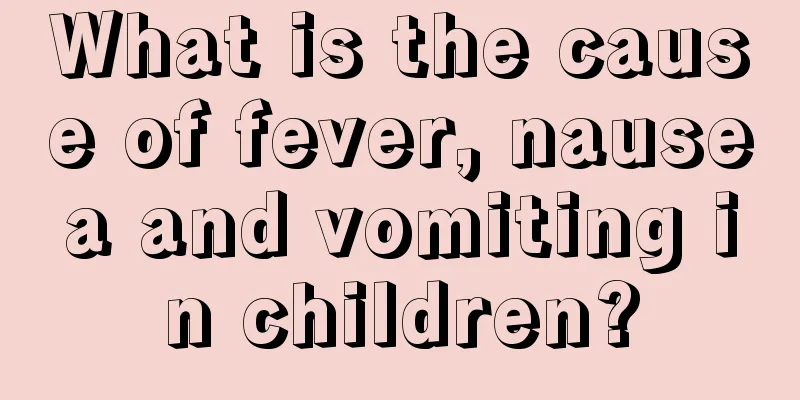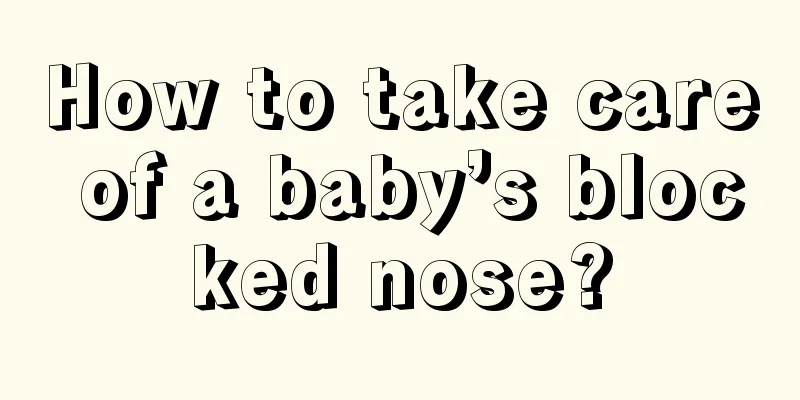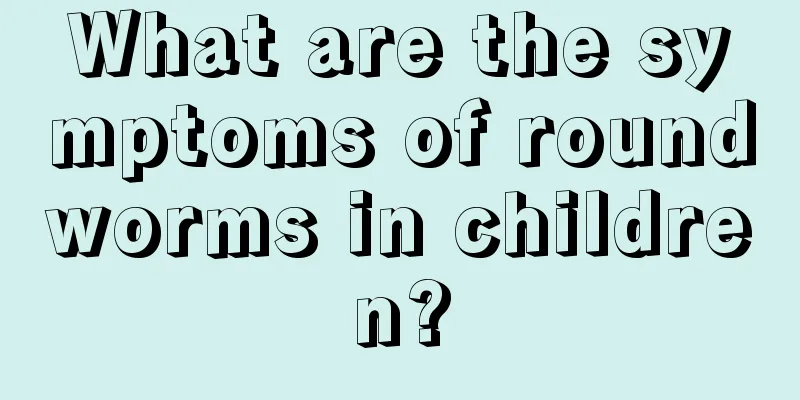What is the cause of fever, nausea and vomiting in children?

|
When children are young, they are bound to suffer from major and minor illnesses, and are most likely to suffer from fever and colds, which is also what parents are most afraid of and worried about. Children's fever, nausea and vomiting catch parents off guard and also have an impact on the child's body. If a child has a fever and vomiting, it is likely that some disease is at work, so it is important to check promptly so that you can know why the child has a fever, nausea and vomiting. The initial symptoms of a child's fever are red face, hot forehead, cold hands and feet, and poor spirits. In addition, there are symptoms of various systems, such as runny nose, sore throat, and cough in respiratory tract infections, abdominal pain, vomiting, and diarrhea in gastroenteritis, and frequent urination, painful urination, and low back pain in urinary tract infections. The accompanying symptoms of various systems in infants are atypical, and may only include anorexia, vomiting, and diarrhea. There are many diseases that cause fever. Parents should pay attention to the pattern of their children's fever and accompanying symptoms, and go to the hospital for examination in time and receive early treatment. The normal body temperature of the human body is 36-37℃, 37-38℃ is a low fever, 38-39℃ is a moderate fever, above 39℃ is a high fever, and above 40℃ is an extremely high fever. Young mothers do not need to panic when they find that their children have a fever. They can take some emergency measures at home in time to relieve the symptoms. Every family should have a thermometer and antipyretics for emergency use. Children with fever should have their temperature measured every 1-2 hours. It is not advisable to use antipyretics when the child's temperature is below 38.5℃; when the temperature exceeds 38.5℃, physical therapy such as cooling patches or ice compresses can be used to reduce the temperature, or an appropriate amount of pediatric cooling tablets can be taken; when the temperature exceeds 39℃, the child should stay in bed, open the quilt or loosen the clothes to expose the skin, place an ice pack or a cold wet towel on the head, and go to the hospital for diagnosis and treatment as soon as possible; in the event of high fever convulsions, the child will have eyes staring or rising, loss of consciousness, unresponsiveness to calls, cyanosis of the lips, face and body, and convulsions of the limbs. Parents should immediately press the child's "Ren Zhong" acupoint (at the midpoint of the nasolabial groove), and continue strong stimulation for 1-3 minutes until the child cries, and then use the above method to quickly reduce the temperature, and also go to the hospital for diagnosis and treatment immediately. Babies under six months old generally do not receive antipyretic injections or take antipyretic medicine when they have a high fever. The best way to reduce the temperature is a warm water sponge bath. Regardless of whether the fever subsides after emergency treatment, the child should be taken to the hospital for treatment. What causes children to have fever, nausea and vomiting? When a child has a fever, nausea and vomiting, he or she must be taken to a regular large hospital for examination and treatment in time to relieve the child's pain, so as to avoid delaying the disease and causing greater trouble. In addition, parents should strengthen their care and nursing of their children, try their best to prevent their children from catching colds, and always have a thermometer at home. |
<<: Can the baby use air conditioning when he has a fever?
>>: What are the warm-up exercises for children?
Recommend
Is it good for children to drink milk in the morning?
Milk is nutritious and rich in calcium. Many pare...
A comprehensive explanation of the white spots on the forehead of newborns
Babies are the apple of every parent's eye. N...
What to do if blisters appear on children's bodies
Children's health problems are what parents a...
What should a 6-year-old child eat when he has a fever?
Many parents feel at a loss when they find their ...
How to treat blisters on children's feet
Many people think that only people who often need...
Childhood obesity is harmful: Five strategies to prevent it
Due to lack of sufficient nutritional knowledge, ...
Why do newborns sometimes have shortness of breath?
Every baby is a newborn angel, and parents will n...
There are great dangers for children playing mobile online games, parents should be vigilant!
With the implementation of the two-child policy, ...
Tuina techniques for strengthening the spleen and stomach in children
Poor spleen and stomach is a problem that many ch...
Why does a child's hair grow slowly?
Because children have different physical constitu...
Boys peeing pain
Excretion is essential for everyone. Once there i...
What are some good ways to reduce fever in children?
If a child has a fever, parents will help the chi...
What should I do if my baby often loses his temper?
Children are the apple of their parents' eyes...
Can I grow taller if I don’t eat meat as a child?
Meat is a very popular food. It can make people g...
When is the best time for children to drink milk?
Because milk is rich in calcium and children need...









